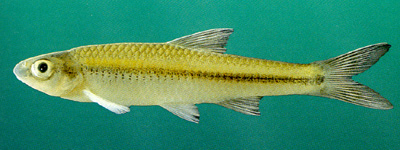
Free-flowing for 194 miles through the state of Alabama – the last river of its kind in the state – the Cahaba River plays home to a diverse population of various species. One of these species is an olive and silver fish that takes part of its name from its watery home: the Cahaba shiner.
Long and slender with an average length ranging from 1.4 to 1.8 inches, Cahaba shiners (notropis cahabae) primarily make their home in clear pools over sand and gravel deposits in the main channels of rivers. While they move to other tributaries during flood events and have been seen in the Locust Fork River in Jefferson County, a small section of the Cahaba – almost 15 miles – is their primary home. It spawns from mid-May to early July, which leads to the male shiners becoming more colorful.
However, due to their limited range and limited population, the Cahaba shiner was federally endangered by the U.S. Fish and Wildlife Service in 1990. While the fish is known to live in a select section of the Cahaba, it has become increasingly more difficult to find them. Increased runoff, chlorine released from sewage treatment plants in the area and strip-mining activity in the upper Cahaba River Basin have led to lower water quality, making the Cahaba shiner’s fight to find a suitable habitat increasingly difficult.
Here at the Freshwater Land Trust, we strive to protect the water and land that make up the Alabama landscape. The Cahaba shiner is just one of the many species that call Alabama home, and we strive to protect and preserve their homes to help create a brighter future.
